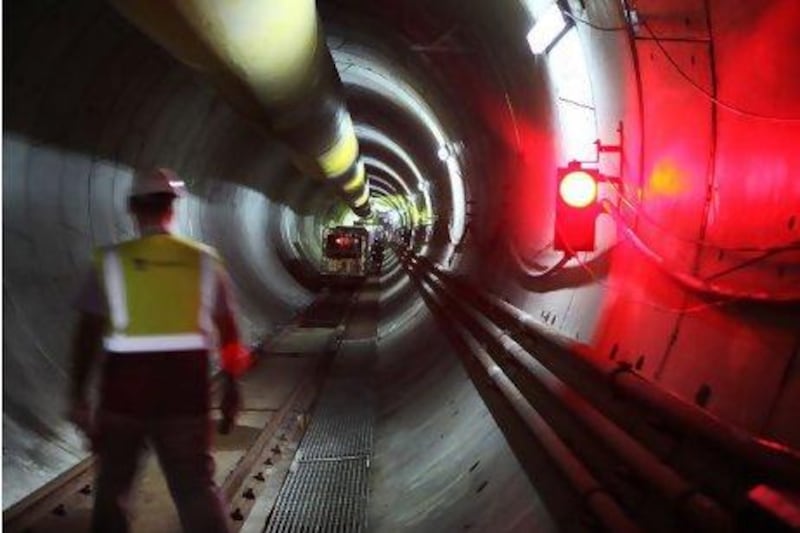ABU DHABI // A dark maze of cavernous tunnels is unfolding in the capital, unseen and largely unknown to the residents above.
It is one of the country’s largest building sites but since construction began in September 2009, only a handful of civilians have seen the country’s new 84-kilometre sewer system.
The Dh5.7 billion Strategic Tunnel Enhancement Programme (Step) is growing under and across the island of Abu Dhabi.
The main lines run down Khaleej Al Arabi street towards the E22, across the growing suburbs of the Abu Dhabi mainland towards a pumping station that will be built at Mafraq to process 1.7 million cubic metres of waste a day by 2030, at a rate of 30 cubic metres a second.
After its completion in 2015, the gravity-fed system will be maintenance free until 2095 – all but forgotten by the millions of people who will use it every day.
Contractors completed 33 of the 41 tunnel access shaft excavations this week. There are a further 43km of small-link sewers that will lead to the main system in the works across the city.
The project employs 2,400 people and construction continues 24 hours a day.
Men such as Peter Steven Lloyd, a Step tunnel manager, ensure this construction is all but invisible on the surface. Over 30 metres underground, at his worksite near the Armed Forces Officers Club, he works in a growing maze of dripping water, mud and darkness.
“In any tunnel there’s danger,” Mr Lloyd warns visitors. “Anything that moves can kill you.”
Mr Lloyd has drilled through the Himalayas, under the English Channel and below the city of London for the Olympics. “I’m like a mole,” he said. “I get everywhere.”
In Abu Dhabi, he works in tunnels that are 5.5 metres in diameter – about three times the height of a dromedary camel.
The project will use 45,000 cubic metres of concrete – 10 times the amount used for the Burj Khalifa and enough to fill 180 Olympic-sized swimming pools.
Locomotives run to one of the drilling sites, where a 110m long, 7m wide, 750-tonne tunnel boring machine (TBM) claws and drills into rock. One section, or “ring” of 1.4m produces 40m of mudstone and gypsum.
After excavation, the TBM operator controls a 3m long robotic arm to place 2.5 tonne steel-reinforced concrete segments around the circumference.
The TBM at Lloyd’s site averages 22 rings, or about 33m, a day.
Each boring machine is served by two locomotives with two “muck cars” that carry out eight cubic metres of excavated mudstone and gypsum in two cars, and bring in the concrete segments.
No ring can be more than 5 millimetres different in height than the last. “If we went 5mm off line, we’d know,” said Lee Pearson, a construction manager on the project.






